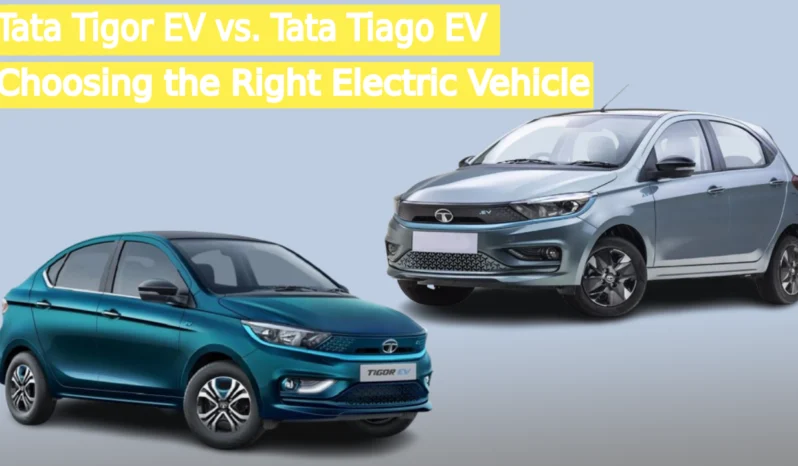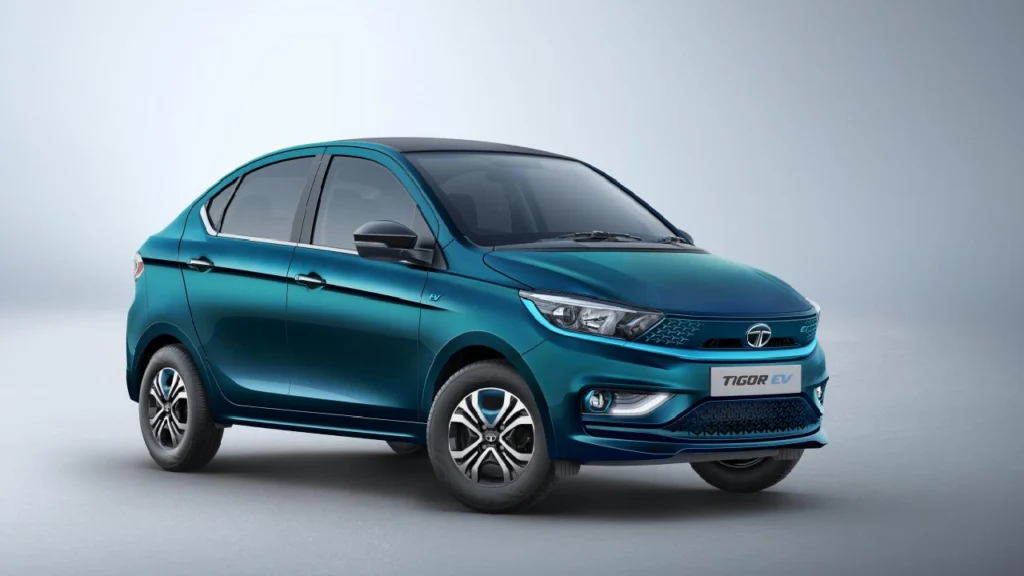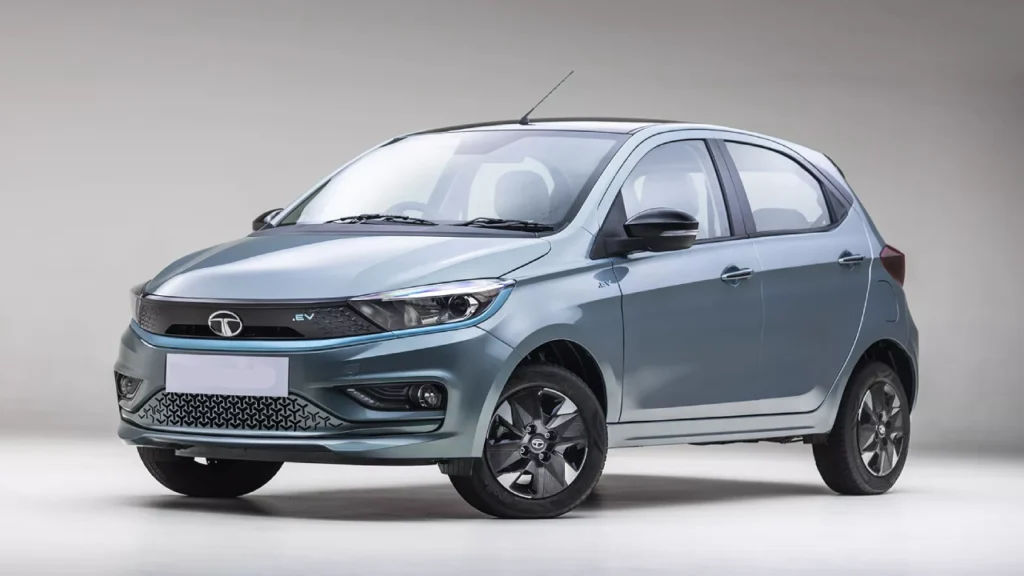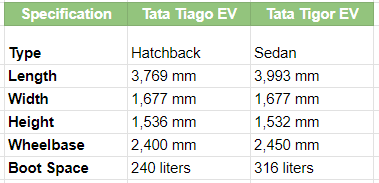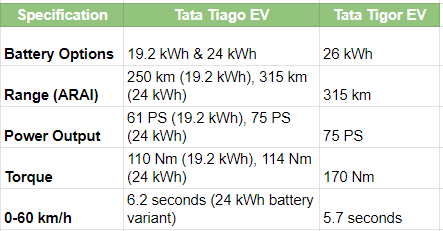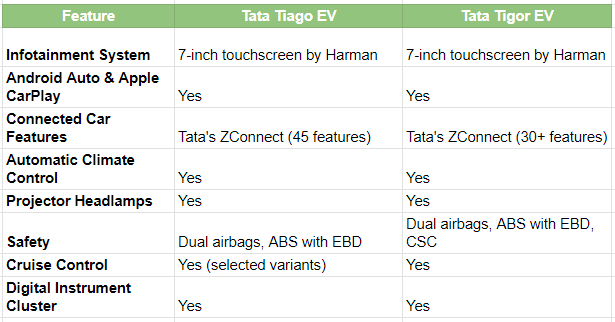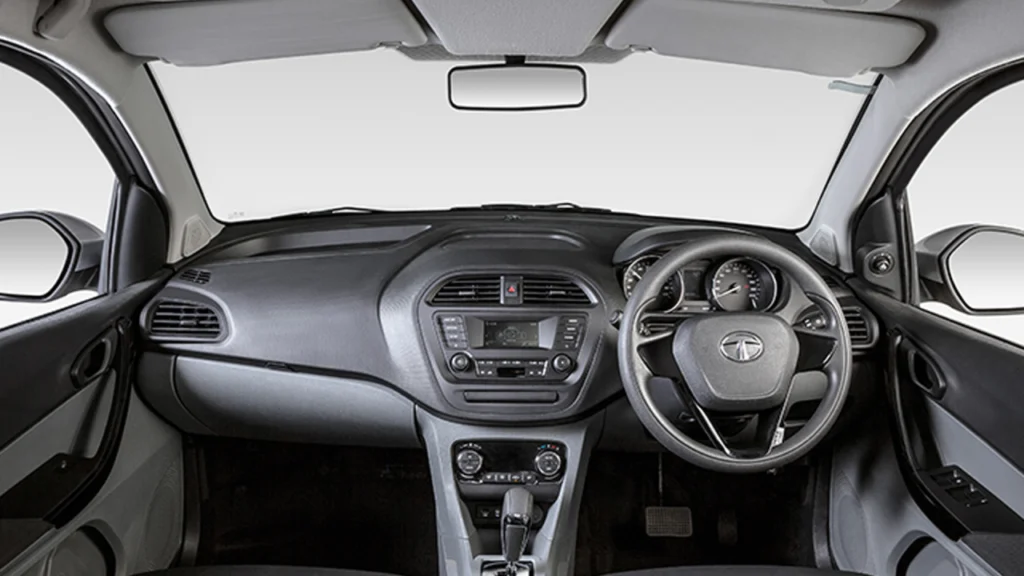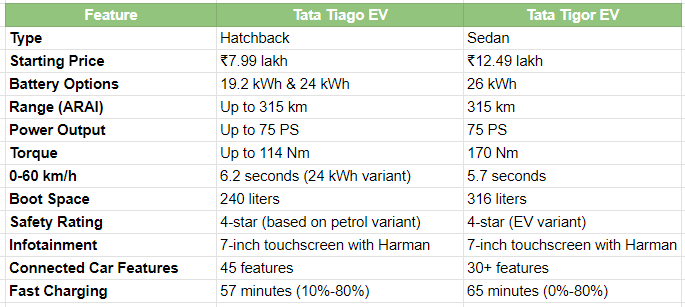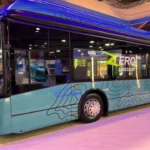The electric vehicle landscape in India is buzzing, and Tata Motors is leading the charge with not one but two affordable EVs: the Tata Tigor EV and the Tata Tiago EV. You’re in the right place if you’re torn between these electrifying siblings. Let’s plug into a detailed comparison that’ll illuminate your path to an eco-friendly ride!
Meet the Contenders
Tata Tigor EV
- Type: Electric Sedan
- Starting Price: ₹12.49 lakh (ex-showroom)
- USP: India’s most affordable electric sedan with a blend of style and practicality.
Tata Tiago EV
- Type: Electric Hatchback
- Starting Price: ₹7.99 lakh (ex-showroom)
- USP: The most budget-friendly electric car in India, making EVs accessible to the masses.
Design & Dimensions: Hatchback vs. Sedan
Tata Tiago EV sports a compact and youthful design, perfect for city dwellers who navigate tight streets and parking spaces. Its electric blue accents and sleek contours give it a modern flair.
Tata Tigor EV, on the other hand, offers a more elegant and elongated silhouette thanks to its sedan body style. The extra boot space is a boon for families and long-distance travelers.
Choose the Tiago EV for urban agility and the Tigor EV for added space and a premium sedan feel.
Powertrain & Performance
Performance Insights
- Tiago EV: Offers two battery options catering to different needs and budgets. The 24 kWh variant provides better performance and range, making it suitable for daily commutes and short trips.
- Tigor EV: Equipped with a single battery option but delivers higher torque, translating to quicker acceleration. Ideal for those who desire a bit more punch in their drive.
If variety and budget flexibility appeal to you, the Tiago EV’s options are enticing. For better acceleration and a consistent performance package, the Tigor EV stands out.
Charging Time
Charging times are fairly comparable. However, the Tiago EV’s smaller battery option charges faster, which might be convenient for quick top-ups.
Features & Technology
Unique to Tiago EV
- Multi-mode regen braking with four levels.
- Leatherette seats in top variants.
Unique to Tigor EV
- Rear parking camera with dynamic guidelines.
- Slightly more premium interior finishes.
- Rear center armrest with cup holder
Both cars are well-equipped, but the Tiago EV offers more regen braking levels, enhancing driving efficiency.
Safety Features
Tata Tiago EV
- Based on the Tiago petrol variant, which holds a 4-star Global NCAP rating.
- Equipped with dual airbags, ABS with EBD, corner stability control.
Tata Tigor EV
- Holds a 4-star Global NCAP rating specifically for the EV variant.
- Comes with dual airbags, ABS with EBD, corner stability control, and rear parking sensors.
The Tigor EV has been tested and rated in its EV form, giving it a slight edge in safety assurance.
User Reviews
Tata Tiago EV Owners Speak
Ananya Gupta, Mumbai: “The Tiago EV is perfect for my city commutes. It’s zippy, easy to park, and I love not spending on petrol!”
Rohit Verma, Delhi: “I opted for the 24 kWh variant, and the range is impressive. Charging overnight at home is convenient.”
Tata Tigor EV Owners Chime In
Simran Kaur, Chandigarh: “The Tigor EV feels more spacious, and the boot space is a plus for weekend getaways. The ride is smooth and silent.”
Arjun Menon, Bangalore: “I enjoy the extra torque in the Tigor EV. Overtaking on highways is a breeze, and it’s environmentally friendly!”
Industry Insights: Expert Opinions
Shailesh Chandra, MD of Tata Motors Passenger Vehicles, stated, “With the Tiago EV, we’re making electric mobility accessible to a larger population. It’s a giant leap towards a sustainable future.”
Auto Analyst, Ramesh Agarwal, opines, “Tata Motors is setting benchmarks with its EV lineup. The Tiago EV and Tigor EV cater to different segments but share the common goal of accelerating EV adoption in India.”
Price Point: Budget Breakdown
The Tiago EV is significantly more affordable, making it an attractive option for first-time EV buyers or those on a tighter budget.
Maintenance & Running Costs
Both vehicles offer low running costs compared to their petrol counterparts. Electricity is cheaper than petrol, and EVs have fewer moving parts, reducing maintenance expenses.
Estimated Running Cost
- Tiago EV: Approx. ₹1 per km
- Tigor EV: Approx. ₹1.1 per km
Both cars are economical in the long run, but the Tiago EV edges out slightly due to its lower initial cost and marginally better efficiency.
Which One Should You Choose?
Choose Tata Tiago EV if:
- You’re seeking the most affordable entry into electric mobility.
- You require a compact car for city driving.
- Budget is a significant consideration.
Choose Tata Tigor EV if:
- You prefer a sedan with more boot space.
- Slightly better performance and torque appeal to you.
- You value a tested safety rating specific to the EV variant.
Tata Motors has democratized electric mobility in India with the Tiago EV and Tigor EV. Your choice boils down to personal preferences:
For budget-friendly city driving, choose the Tiago EV. For more space and better performance, choose the Tigor EV.
Either way, you’re contributing to a greener future and enjoying the perks of silent, efficient driving.
Comparison Table: Quick Glance
Both the Tata Tigor EV and Tata Tiago EV have their unique advantages. The Tiago EV is more affordable and suitable for city driving, while the Tigor EV offers more space and a premium sedan feel. Ultimately, your choice should depend on your specific needs and preferences. Both vehicles are contributing to the acceleration of EV adoption in India, and they offer low running costs compared to their petrol counterparts.ELCTRIK Speaks

